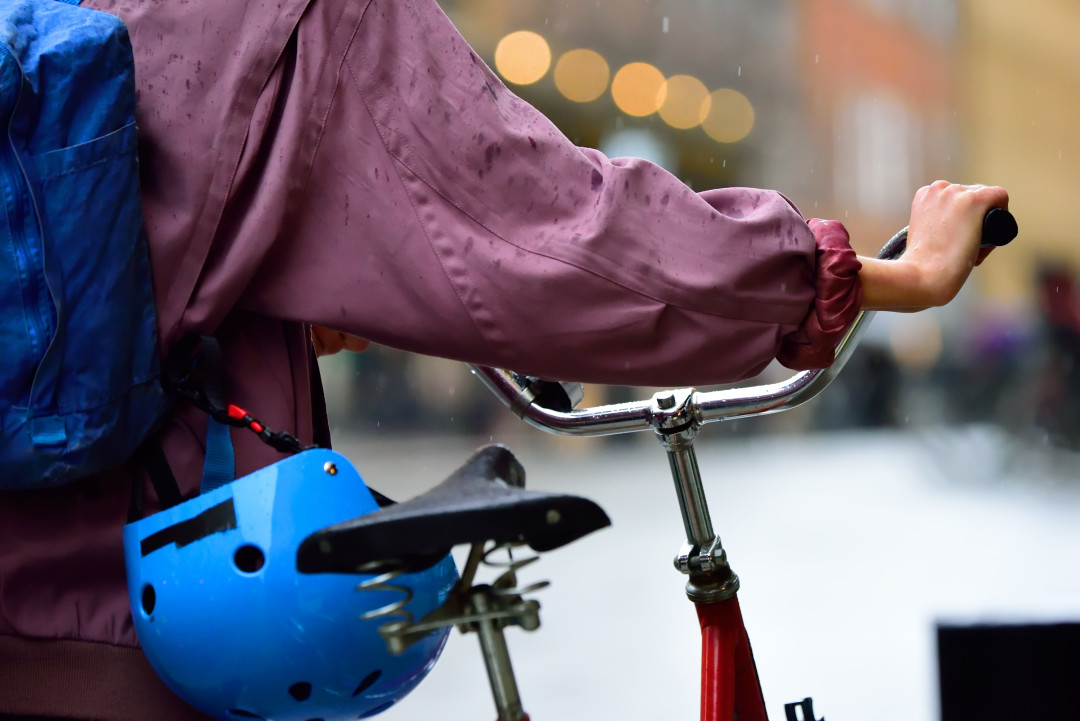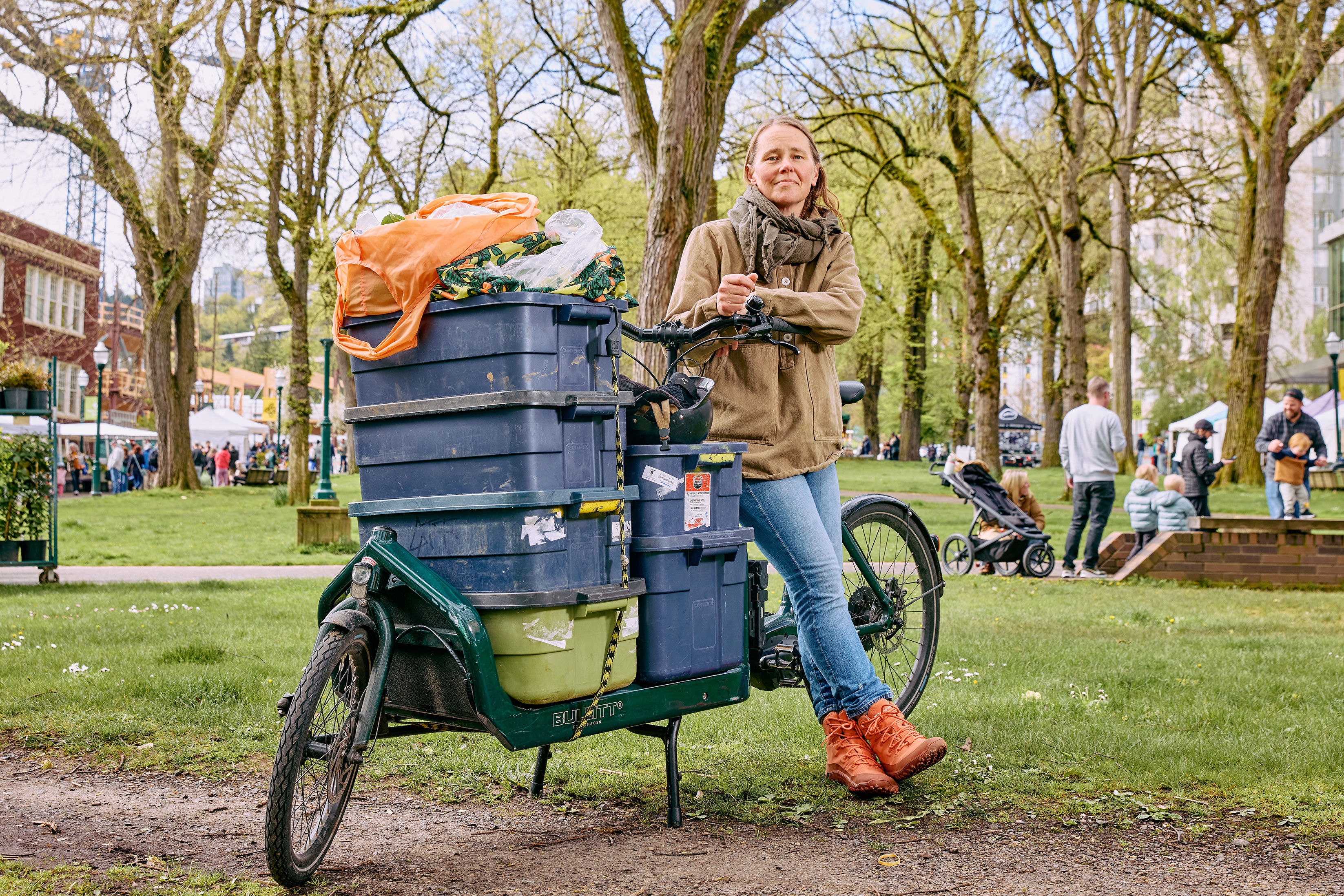Expert Tips for Your Rainy-Day Bike Commute

Image: Shutterstock
With fall upon us, the bike commute that was a breeze when the sun was out has turned into a soaking wet slog. But with a little preparation, there’s no need to let your steed collect dust in the garage until daylight savings comes back. We talked to local mechanics (and intrepid PoMo cyclists) for tips on staying dry, staying safe, and keeping your bike in working order.
Fenders are the most important investment for an all-season bike commuter:
“If you only get one piece of rain gear, get good fenders,” says Community Cycling Center’s Volunteer and Event Manager, Patrick Loftus. Anything is better than nothing, but the more coverage, the better: “The closer the fenders are to the ground, the drier your feet (and the person behind you) will be. Full coverage fenders will also keep your bike cleaner in the winter, prolonging the life of parts on the bike.”
Portland Design Works makes a set of attractive full-coverage fenders, complete with mud flaps, which come in two different hardware options to fit a range of bikes.
Cover up right to stay dry:
Quality rain gear is the other part of the dryness equation. Bike-specific rain jackets and pants are ideal, with features like a biking-specialized fit, extra durability in high-wear areas, and armpit vents. Showers Pass, a Portland company, sells rain gear for cyclists ranging from the basic to the advanced, and is serious about waterproofing.
What’s under your rain gear also matters. It’s hard to stay completely dry, and wool is warm even when wet, note the local bikers we spoke with. PoMo managing editor Margaret Seiler likes to “go full 19th century, with long wool socks and wool knickers,” and notes that “Smartwool makes a great thin wool hat that fits well under a helmet.”
Good lights are extra important in the winter:
Lights basically fall into two categories: those that help you see the road, and those that merely let cars see you. For most city riding, the latter is the most important, and one mechanic we spoke to recommends a minimum output of 35 lumens for a front light, and 15 for the back—but more is better, with closer to 200 lumens being ideal for the front. Knog has a wide selection of USB-rechargeable lights, from simple, affordable silicone models to blazing-bright headlights that light up dark streets like the Vegas strip.
For a whimsical take on visibility, you can always pick up a set of spoke lights. This set from Monkeylectric turns wheels into everything from a model of an atom to a platoon of Space Invaders.
A waterproof stuff-receptacle is a must:
Panniers are a spine-saving alternative to a backpack, and PoMo intern Rachel Grozanick calls Thule’s Pack ‘n’ Pedal Commuter Pannier “the best panniers I’ve ever had,” noting that “they’re so water resistant and well-designed that I never bother to use the rainfly that they come with, even in the heaviest downpours.”
Maintenance and riding tips:
Mechanics say you should oil up your drivetrain more often in the winter, preferably with extra- viscous wet-weather oil that will keep moisture at bay. If you have a metal seatpost, keep that greased up, too—there are few headaches worse than a seatpost seized into a frame due to rust.
Keep in mind that braking can take longer when roads are wet; “extra-grippy” brake pads like the salmon Kool Stop model add stopping power and “don’t squeak and squeal as much,” says PoMo contributor Brian Barker. “Don’t leave them on year-round, though, as they’re a bit more abrasive, and can wear down your rims.”
It’s always smart to keep a plastic bag stowed under your seat to cover it with when you’re parked. Additionally, says Community Cycling Center’s Loftus, a seat “with minimal seams” will minimize water absorption, both keeping you dry and prolonging the life of the seat.
Finally, deflating your tires by 5 to 10 PSI in the winter means more rubber touching the road, which can provide some extra traction in slippery conditions.




